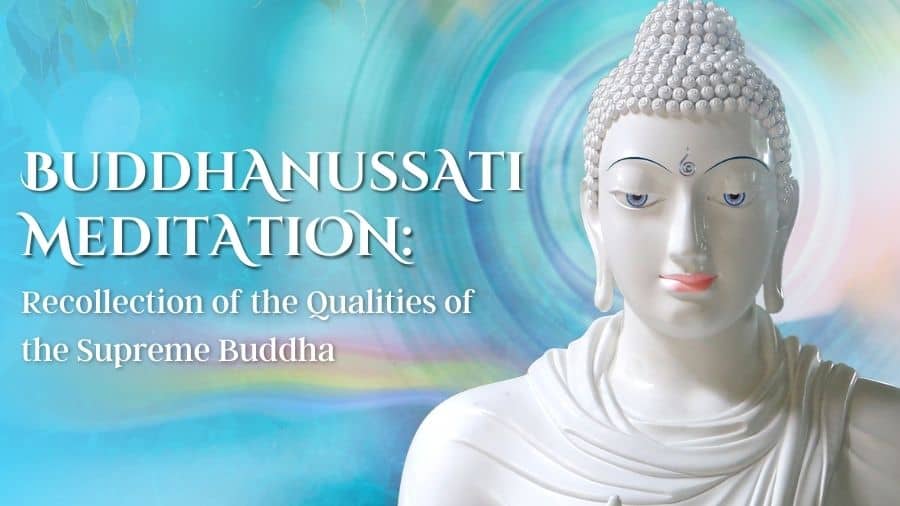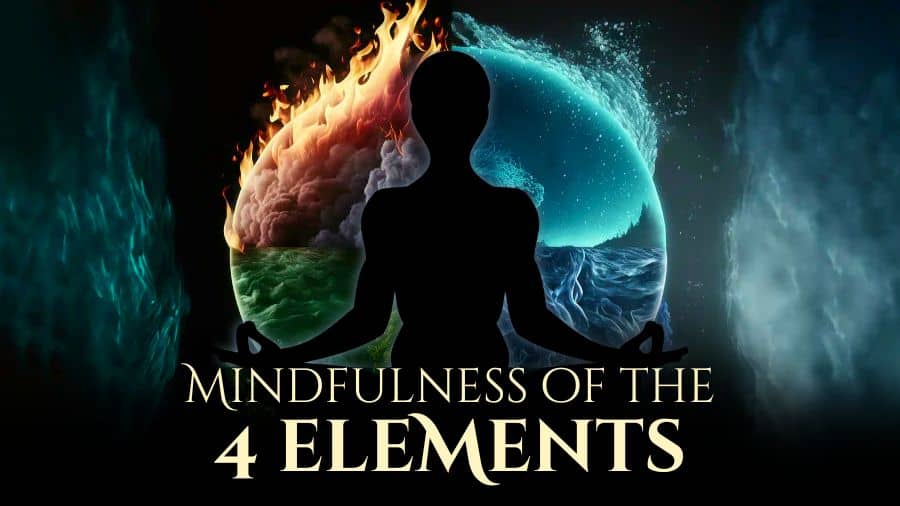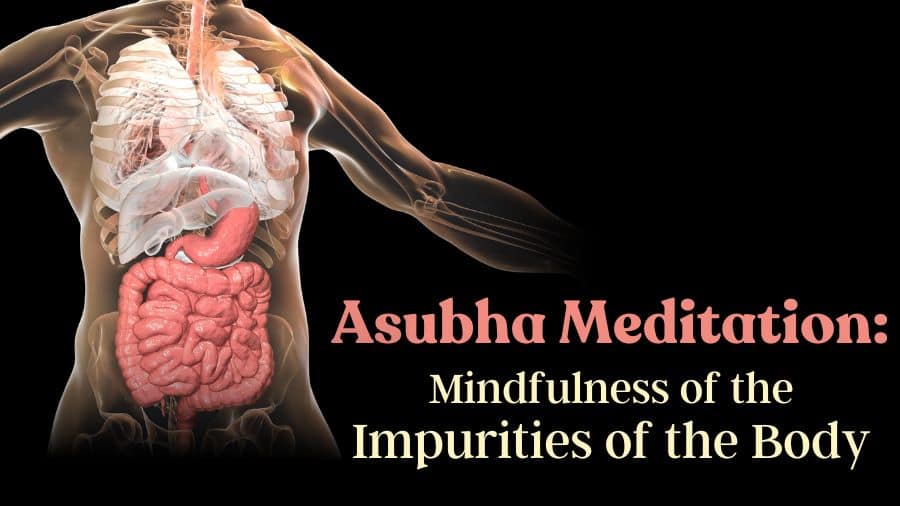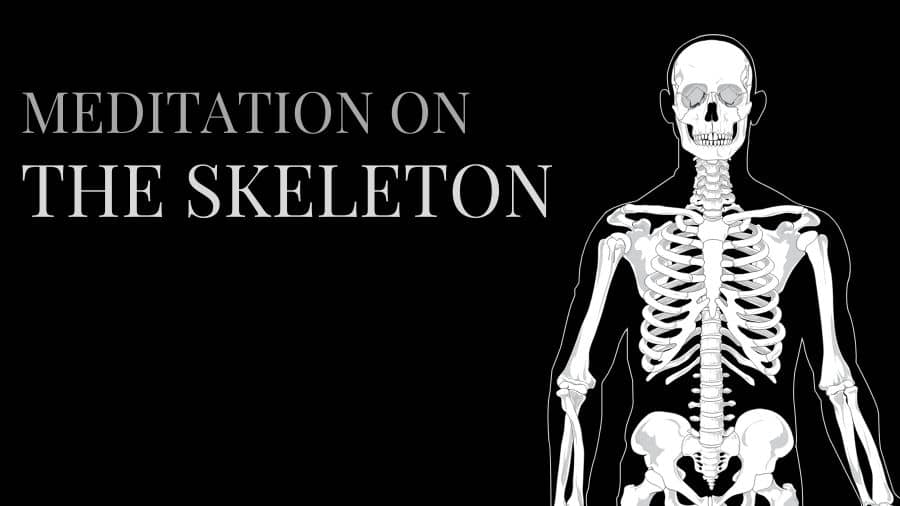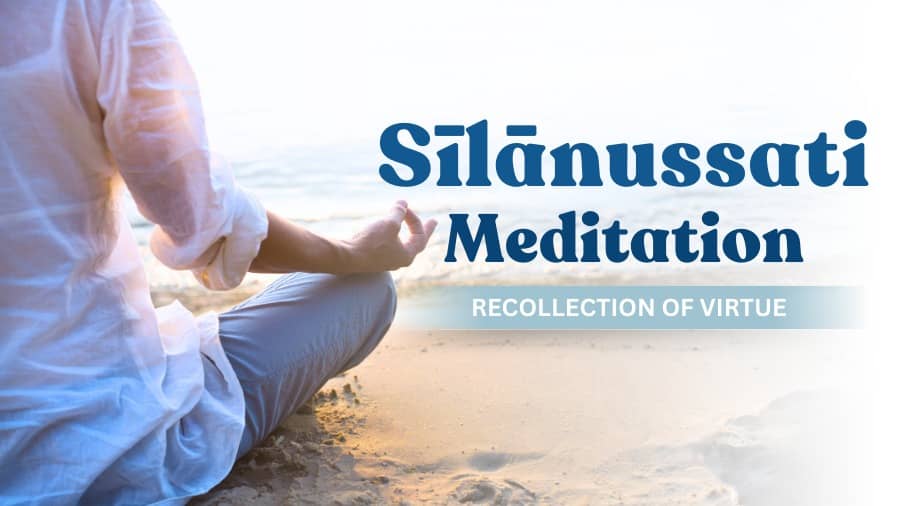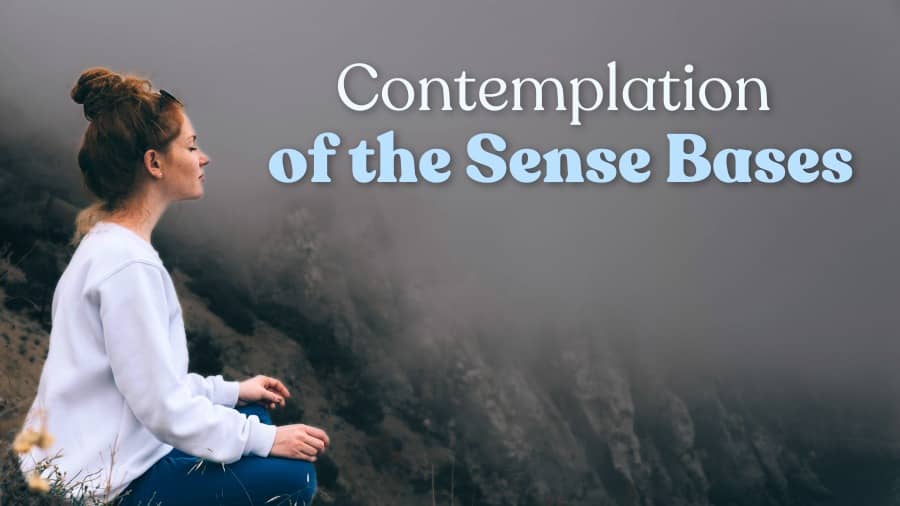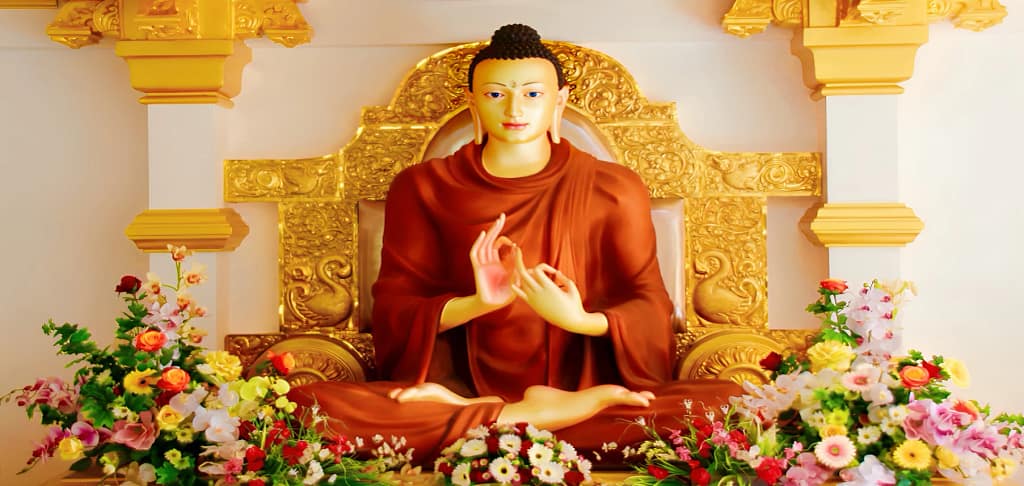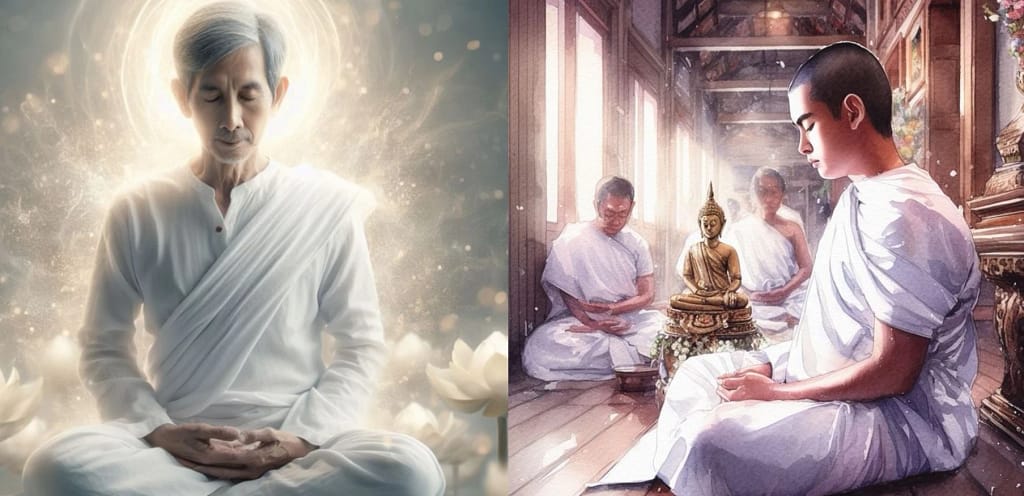DHAMMAPADA (Verses 35, 36 & 37)
The Mind
The mind is so difficult to subdue. It is unreliable. It seizes whatever it desires. Good indeed, it is to tame such a mind. A tamed mind brings happiness.
It is so difficult to detect the true nature of the mind. The mind is extremely subtle and seizes whatever it desires. A guarded mind brings happiness.
The mind dwells in the cave of the heart. It is without a body and wanders far and alone. Those who restrain this mind will be freed from Māra’s bonds.
Dignity and quiet joy in all that we do are the expression of perfect concentration and perfect wisdom.
Read... Listen... & Practice
Maranasati: Reflection on Death | Thinking about the reality that one day you will have to leave this world will make one diligent in practicing what is good and wholesome.
Buddhanussati Meditation: Recollection of the Qualities of the Supreme Buddha | Buddha’s Qualities are immeasurable, unequalled and foremost; hence the results we gain by wisely contemplating such a Great Person are indeed extraordinary. Let’s meditate!
Dhatu Manasikara: Mindfulness of Elements Meditation | Mindfulness of Elements meditation to help you realise the true nature of your body.
Mettā Bhāvanā: Loving-Kindness Meditation | Spreading loving kindness to one self and others helps you to abandon anger and hatred within the mind resulting in a calm, friendly, peaceful mindset.
Asubha Meditation: Mindfulness of the Impurities of the Body | The Buddha taught the meditation on the body parts as a way to overcome attachment to our own bodies as well as the bodies of others.
Meditation on the Skeleton | Mediation on the Skeleton to help you realize the true nature of your body.
Contemplation of the Sense Bases | Learn to contemplate on the true nature of the sense bases.
Guided Meditation
Meditation heals our lives more than anything else. It helps us find inner peace and calm our mind and is conducive to developing wisdom. Meditation broadens our perspective of life. It help us see life for what it really is and experience happiness through contentment and understanding.
Practicing meditation is a remarkable way to develop your mind. It is our teacher, the Supreme Buddha, who first taught us the possibility of developing our minds.
The Supreme Buddha developed his mind to the highest level possible and showed us the way to achieve the same. Thus, the technique that is used to develop the mind is known as meditation.
Meditation enriches and gives more meaning to life. Meditation is a specialized technique to improve the mind. It was the Buddha who first taught us that the mind could be developed. He developed his mind to the highest level and taught us the way to develop our minds as well. We call this technique of mind development ‘meditation’. If you practice this technique, you too could improve your mind rapidly. For this, you need the capacity to think and analyze. If you are unable to do this, it is not possible to improve your mind. Only a few people in this world has the potential to train and improve one’s minds. You, too, can try to include yourself into that few people if you make an effort to practice meditation.
The initial qualification for successful meditation is your confidence in the Buddha’s knowledge. It is called “saddhā”. We believe that Buddha is the greatest teacher who developed the mind fully. We can only improve our minds when we follow guidelines set by a teacher who himself has improved his mind. The Buddha is the ultimate teacher for this purpose. Therefore, if you have confidence in the Buddha, learn his instructions well and conduct your life according to his guidelines, and you too can develop your mind through meditation.
When a person who has the capacity to think comes across the “Dhamma”, the Buddha’s teachings, and is impressed by the Dhamma, it is called “khano” or momentous opportunity. This is very rare. The Buddha and his followers often said that those who do not take advantage of this momentous opportunity suffer in hell. This life passes very quickly. We have a life that is subject to sickness. We have a life that is limited by death. Therefore, before we die, before we become terminally ill, before our sense faculties deteriorate, while we have mental alertness, while we have good hearing, while we still have the capacity to think and while we are able to understand, we must utilize this momentous opportunity. If you have confidence in the Buddha’s teachings and assurance in following his teachings, you have already obtained this momentous opportunity.
However, be aware that it is the nature of the mind not to sustain anything for long. Whether we try to practice virtue, self-control, or mind development, it becomes almost impossible after a while, and before we know it we are back where we started. You must understand this nature and have the determination to internalize the Dhamma. Think along the Dhamma and improve your mind according to the Dhamma.
Nature of a Developed Mind
The greatest change you will notice when developing your mind is that good human qualities develop within yourself. As your mind improves, you will develop a certain personality, which gives rise to a certain noble quality called “dignity”. This quality can only enhance your life. It leads you away from jealousy and envy, and away from anger and revenge. You can be happy for the well-being of others as well as for yourself. These are the indicators of a developed mind. This nature can only be attained by developing one’s mind.
Self- Realization
These are the characteristics of a mind on the way to improvement and they will become evident within you. When it starts happening to you, you should understand that inside you there is a mind that is capable of being improved.
What is Actually Meditation?
Meditation is a way of taming one’s the mind. This method of conducting our mind leads to the purification of our inner self. This will gradually lead to a much calmer and happier life making you much more determined, effortful and diligent. You can gain all these benefits by developing one’s mind.
What are the basic qualifications that is required to practice meditation?
The ability to think independently is a very precious skill to have. When Dhamma is being taught to you, if you feel confident that you too can practice this Dhamma, then that is thinking independently. Then, even if others try to discourage you from Dhamma practice saying ‘meditation is pointless, there’s no point in trying to understand the reality of life’ you will be able to stay uninfluenced by such wrong ideas, opinions and views. Therefore, have strong confidence that this Dhamma can be realized and that confidence will gradually help you to enter the path to Nibbana!
What are the 'Basic Types of Meditation'?
The first one is “samatha bhāvanā” or “calm-abiding meditation” and the second is “vipassanā bhāvanā” or “insight meditation”. The Buddha very clearly emphasized that both these methods are equally helpful to the understanding of life. By practicing calm-abiding meditation, you settle and strengthen your mind. By practicing insight meditation, wisdom is developed. These two methods cannot be separated.
Can I practice just one of these two methods of meditation instead of practicing both?
These two methods cannot be separated.
A person who is attempting to understand life through the Buddha’s teachings (the Dhamma) first practices calming meditation and then turns it into insight meditation. Alternatively, some start with insight meditation and then calming meditation. There are also some who practice both calming meditation and insight meditation simultaneously.
There are no records of any persons who have entered the path to enlightenment by focusing on just one of these two methods of meditation. In other words, it does not seem possible to enter the path to enlightenment without practicing both these meditations. By practicing calm-abiding meditation, you settle and strengthen your mind. By practicing insight meditation, wisdom is developed.
Thus, it is important to understand calming meditation and insight meditation in greater detail.
What is Calming Meditation (Samatha Bhāvanā)
When you practice calm-abiding meditation and improve your mind, you lose weaknesses in your mind, and reduce the tendency of the mind to digress. You strengthen your mind and you are then able to comprehend things as they really are. This means that through calming meditation, your mind becomes profoundly workable. Such a mind can be used to analyse and understand realities of life.
Calming meditation prepares the mind by improving and strengthening it. In this method, we overcome ‘nīvarana’ or hindrances and calm the mind. The word samatha means calming down or the total absence of conflict in your own mind. When we experience problems in our lives we resolve it. Samatha is like that. Samatha means the resolution of all conflicts in the mind and settling the mind. We are then able to calm the mind and come to a resolution of all conflict of the mind. Calming meditation gives us this ability.
What is Insight Meditation (Vipassanā Bhāvanā)
Insight meditation is investigating the truth of something. Wisdom is the ability to see the truth as it is. Again, insight meditation helps you understand the nature of life as it is. This understanding comes through wisdom.
Insight meditation is the way to see the basic nature of all things or their fundamental characteristics. As an example, the Buddha said that anything that arises as a result of a cause is impermanent. What then is the most fundamental nature of all things? It is impermanence. If this impermanence is common to all things, we, too, have this characteristic of impermanence within us. Impermanence is evident throughout our lives. Although we are fooled by this life, although we ignore this impermanence, there is no way we can prevent impermanence from occurring. Until we understand this true nature, we will grieve when things become impermanent. All things that we find pleasure in are impermanent. Not understanding this impermanent nature leads to suffering. In addition, when things go wrong in our life, if we can understand that this too will change and become impermanent, we can remain calm, which indicates that we have developed wisdom. We cannot control this impermanent nature. We cannot sustain our bodies in a state of constant youthfulness and good health. We have no control over that. Therefore, we cannot claim ownership of our bodies. Thus, there is nothing that is ours.
Not having true control over change and impermanent things, not truly owning anything is called “anatta” or non-self. Seeing impermanent things as impermanent, seeing suffering as suffering, and seeing non-self as non-self is called “seeing the reality.” When investigating things mindfully and wisely, we will gradually begin to see impermanence, suffering and non-self within this life. We will then be able to see through most things. This ability to see things in its true light is wisdom. The method of developing this ability to see things in its true nature or through wisdom is vipassanā.
Is insight meditation unnecessary for lay followers?
We must think intelligently here. We could be warned that as lay people living a homely life, vipassanā is harmful to the lay life. We must be able to think independently and realize that the Buddha would never teach us anything that could be damaging to our lives. Harmful things to our lives are taught by ordinary, unwise people. The Buddha is not an ordinary person, he is an enlightened one who eradicated all defilements and taught the Dhamma to ordinary people to overcome the ordinary state of life. The noble community of monks is the community that is heading towards enlightenment, overcoming ordinary states. I have gone for refuge to this Triple Gem: Buddha, Dhamma, and Sangha. The doctrine of impermanence, suffering, and non-self belongs to the Triple Gem in which I took refuge. Therefore, if someone says that this doctrine of impermanence is not important to our lives, that person doesn’t belong to the triple gem. He is an ordinary person who holds wrong view. You must identify that person clearly in this manner, and act with a complete knowledge of mind. The Buddha had infinite compassion towards the world and acted only for the benefit of people. This is where our confidence in the Buddha’s words comes in.
What is Satipatṭhāna (Establishment of Mindfulness)
Establishing mindfulness is a way of looking at life in a clear and profound way. In general, we need mindfulness to do our daily chores. We walk on the edge of the street so that we can avoid being hit by vehicles. We cross the road after checking for oncoming traffic. All these we do with awareness and care. This is our usual mundane mindfulness. If we become absent minded and lose mindfulness, we lose track of what we are doing. What meditation does is improve this normal mundane mindfulness to a higher plane where we become aware of our inner selves. This improvement to a higher plane is called sammā sati or right mindfulness.
The four establishments of mindfulness or ‘cattāro satipatthāno’ taught by the Buddha raise our mindfulness to a higher plane. That is called sammā sati, or right mindfulness. Again, you must realize that our day-to-day mindfulness is somewhat different from sammā sati. No matter how much of our daily tasks we do with mindfulness, unless we develop that mindfulness to the level of sammā sati, it will not help us understand reality of life. The satipatṭhāna or the establishments of mindfulness are entirely composed of sammā sati or right mindfulness.
What are the terms Right View & Right Understanding and how do they effect mindfulness?
The terms ‘right view’ and ‘right understanding’ are commonly used to mean sammā ditthi but are not strictly accurate. The Buddha explained sammā ditthi as the knowledge of the Four Noble Truths. This life is based on the law of cause and effect. Its nature is that in order to eliminate the effect the cause has to be eliminated. The impermanent nature of this world is founded on the law of cause and effect. To go beyond this impermanence, in order to reach ultimate bliss, one has to follow the Noble Eightfold Path. If someone understands this law of cause and effect, if someone understands the need to go beyond and reach the ultimate bliss following the Noble Eightfold Path, that person can conduct one’s mindfulness very skillfully. Such a person possesses ‘right mindfulness’.
So now you know that right mindfulness can only be established through sammā ditthi, or right understanding, which derives from initial knowledge of the Four Noble Truths. Inversely, knowledge of the Four Noble Truths gives us sammā ditthi, which is necessary for right mindfulness in realizing the true nature of life. The Buddha, with great compassion, clearly shows in Mahā Satipatthāna Sutta that the Establishment of Mindfulness will result in purification of the mind for all of us; the eradication of grief, sorrow and lamentation; the abandoning of physical and mental pain, and profound understanding of life leading to ultimate bliss, Nibbāna.
We cannot achieve anything without commitment and dedication. It is the same for Meditation. It is essential that we understand why we meditate, why it is necessary, and how it benefits us. In general, our lives are limited to what we experience externally. So many people think that meditation helps to maintain good health, improve memory, lessen stress, and helps us lead an organized life. Although this is correct, these should be expected as secondary benefits. The number one goal of meditation is to understand the reality of life. The person focused on understanding the reality of life through meditation thus experiences a healthy mind. The person who focuses on understanding the reality of life through meditation thus experiences enhanced memory skills. The person who focuses on understanding reality of life through meditation thus experiences lower stress levels. The person who focuses on understanding reality of life through meditation thus experiences a more organized life. The person who focuses on understanding the reality of life through meditation thus becomes unshaken by the ups and downs of life. So, if you expect such worldly benefits from meditation you will get them as additional benefits as you focus on understanding the reality of life. Therefore, our aim of meditation should become, understanding the reality of life. This understanding can be achieved through the Four Establishments of Mindfulness.
What is the Four Establishments of Mindfulness?
We have an ordinary mindfulness, which really is no help at all when we want to stop pain or sorrow. This mundane mindfulness cannot carry us to an understanding of life or eradicate sorrow. It cannot calm or collect our restless minds. But right mindfulness or sammā sati can do this. This right mindfulness is developed within the establishments of mindfulness. The Buddha taught that there are four systems through which mindfulness can be developed. These are called the Four Establishments of Mindfulness.
- Kāyānupassanā, which is establishing mindfulness of the body.
- Vedanānupassanā, which is establishing mindfulness of feelings.
- Cittānupassanā, which is establishing mindfulness of thoughts.
- Dhammānupassanā, which is establishing mindfulness of facts that contribute to understanding the reality of life.
These four establishments of mindfulness lead to understanding the reality of life.
Since the Buddha taught the results of practicing satipatṭhāna (the Four Establishments of Mindfulness) at the very beginning of the discourse, we should have no doubts about the satipatṭhāna or its results. It is clear that we will be able to gain tremendous amounts of benefit if we cultivate the Dhamma and cultivate our minds. The first satipatṭhāna we develop is kāyānupassanā or mindfulness of the body. In kāyānupassanā meditation, the first method is “ānāpānasati” or mindfulness of breathing. From the moment, we were born we have been inhaling and exhaling. But most of us are not aware that we can use breathing to establish mindfulness and purify our minds. But the Buddha discovered this over 2500 years ago. Since then, millions of people have benefited from this method. So, this is a tried and tested way that yields result. His teachings of the Four Noble Truths are as follows:
- There is suffering in this life
- There is a cause for this suffering
- This suffering can be overcome and that state is called “Nibbāna”
- There is a process to overcoming this suffering, which is the Noble Eightfold Path.
We need to keep this at the forefront of our minds as we learn about meditation.
Kāyānupassanā – Contemplations on the Body
“Kāyagatasati,” means, mindfulness that must be developed, taking the body as the base.
Kāyānupassanā meditation has fourteen methods. In summary they are,
- Ānāpānasati:the mindfulness of breathing meditation
- Satisampajañña:mindfulness of actions meditation
- Iriyāpatha:mindfulness of posture meditation
- Asubha bhāvanā:the mindfulness of the impurities of the body
- Dhātumanasikāra: the meditation of the four great elements
- – 14.Navasīvathika: Nine stages of the deterioration of a dead body
We started with mindfulness of in breath and out breath, which is closely connected with the body. We have progressed to a much wider outlook of life. Now, you will understand that this Dhamma is not one that can be found through prayer or wishing. A life free from deterioration and death is just not possible. This means that there is a reality in this life, which we cannot avoid. This Dhamma taught by the Buddha helps us see this reality and gives us the wisdom to face it. The person who realizes that this is the path to see the reality will live a worry-free life. That is what kāyānupassanā is for. We see now that there is a course of action that we must undertake to a worry-free life. We must also realize that our lives become cluttered through these courses of actions we undertake. But kāyānupassanā is a course of action that purifies our lives.
Therefore, you can see how practical the Dhamma of the Buddha is. When we learn the Dhamma in a language we could understand, we can realize how important it is to our lives. We will see the Dhamma’s akāliko quality (it can be realized at any time period) when we truly try to practice that Dhamma little by little. So, you have this rare moment at your fingertips. Don’t throw away the Dhamma that you are learning. Practice this Dhamma as best as you can. You will witness the development of your life when you practice the Dhamma. You will then understand that this Dhamma is well preached by the Buddha. That means the Dhamma is svakkhāto (well-preached). The Dhamma preached by the Buddha is something that needs to be realized in this life. That is what is called sanditṭiko (needs to be realized in this life). The Buddha’s Dhamma can be realized at any time period (akāliko ). There is nothing hidden in the Buddha’s Dhamma. It can be spoken about openly. One can invite wise people to ‘come and see the Dhamma ’. This quality of the Dhamma is known as ‘ehipassiko’. The Buddha’s Dhamma needs to be applied to oneself. That is why the Dhamma is called opanyko. The Buddha’s Dhamma is realized by the wise, each for himself. Therefore, the Dhamma is called Paccattaṁ Vēditabbo Viññūhi.
These qualities are in the Dhamma we discussed. We learned about breathing meditation, awareness meditation, postural meditation, impurities of the body meditation, meditation on contemplating elements, and meditation on the nine cemetery contemplations. All these are included in Kāyānupassanā – contemplations on the body.
In the four establishments of mindfulness, there are three other sections: vedanānupassanā or contemplation of feeling, cittānupassanā or contemplation of mind, and Dhammānupassanā, which is the contemplation of nature of things. We will learn these methods of meditation too. While doing kāyānupassanā meditation, it is advisable to practice just the kāyānupassanā for a long period. Within kāyānupassanā we can improve our awareness, wisdom, and effort greatly.
Mindfulness on Feelings (Vedananupassana)
In this chapter, we will learn “vedanānupassanā” or the contemplation of feelings within the four establishments of mindfulness as taught by the Buddha.
Mindfulness of thoughts (Cittānupassanā)
There is something special in our inner life. It is the mind. You are now going to learn about the cittānupassanā-contemplation of mind meditation. This meditation focuses on contemplating mind by establishing mindfulness on it. The Buddha preached the cittānupassanā meditation as the third section in the Satipatṭhāna sutta. First and second parts were the kāyānupassanā meditation and vedanānupassanā meditation, respectively. The third part is the cittānupassanā meditation.
Contemplation on Mind (Dhammanupassana)
In this chapter, we will learn, Dhammānupassanā, which is establishing mindfulness of facts that contribute to understanding the reality of life.
Anussati Meditations
- Buddhanussati Meditation
- Dhammanussati Meditation
- Sanghānussati Meditation
- Sīlānussati Meditation
- Cāgānussati Meditation
- Devatānussati Meditation
Mindfulness on Death Meditation (Maranānussati)
In this last section, we will introduce you to the Maranānussati bhāvanā or contemplation on death.
Four Divine Dwellings (Brahmavihāra)
The four Divine Dwellings that lead to the Brahma world
Cattāro Brahma Vihāro (the four divine dwellings) are four methods of meditation that you will learn in this chapter. These four divine dwellings are taught by the Buddha; they are mettā or loving kindness, muditā or appreciative joy, karunā or compassion, and upekkhā or equanimity. They are called divine dwellings because the Mahā Brahma possesses these dwellings. If one practices the four divine dwellings habitually, at the breakup of the body, he or she will be reborn in a Brahma world.
Perception on Skeleton (Aṭṭhika-sagngnā)
Atṭhika saññā bhāvanā is the contemplation on the parts of a skeleton. By practicing atṭhika saññā frequently, one may advance the meditation for the abandonment of defilements. One develops passion, hatred, and delusion because of the unrestrained eye, which is attracted to the details of forms seen. The eye can be restrained by practicing atṭhika saññā, which helps to control the eye from being attracted to enticing forms.

